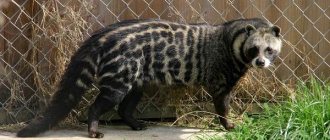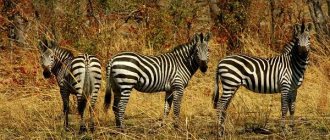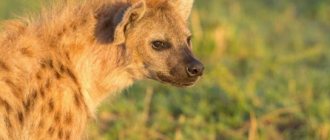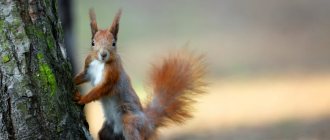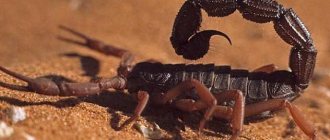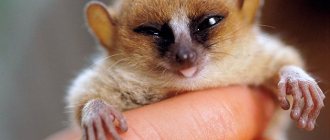Origin of the species and description
Photo: Cheetah
The cheetah is a well-known predator from the cat family. He belongs to the cheetah genus. Previously, there was a species diversity of these animals, and even a separate subfamily was distinguished. The reason can be explained by the similar structure of cheetahs to both cats and dogs, which really justified the selected subfamily. But later, at the molecular genetic level, it was proven that cheetahs are very close to pumas, and therefore, together with them, they belong to the subfamily of small cats.
There are several subspecies of cheetahs. They differ in appearance, mainly in color, and also live in different territories. Four of them live in Africa, in different parts of it, and one in Asia. Previously, more subspecies were identified, but with the development of science, detailed analyzes and studies revealed that the species is the same, and the differences are caused by a small mutation.
Cheetahs are small, predatory cats. The weight of an adult is from 35 to 70 kg. The most interesting thing about them is, of course, their color. It is brighter in cheetahs than in any spotted representatives. In addition, some subspecies differ in color.
Japanese green pigeon
Who would have thought!
Those bluish amorphous winged creatures that we are accustomed to in the cities of Russia, it turns out, are not the only representatives of their family. In the Sakhalin Region and Primorsky Territory, green pigeons are still preserved. If you give your child a coloring book with a dove and colored pencils, then perhaps he will come up with just this multi-colored Japanese one. Bright, stylish, in fashionable colors - a dove that arrived. He lives not in the main squares of the city, but in the forest, and he is more secretive than his pot-bellied city brothers. Downshifter pigeon. But, accordingly, it suffers greatly due to deforestation.
Appearance and features
Photo: Cheetah cat
The body of cheetahs is about 120-140 cm in length and is very slender. The height of the animal reaches 90 cm at the withers. The body is so powerful that it is possible to recognize its muscles through the fur. The cheetah has practically no fat, but in its habitat it does well without reserves.
The head is small, even slightly out of proportion to the body. It is slightly flattened and elongated. On the sides on top there are small rounded ears. They practically don't perform. The eyes are set high, round, directed forward. The nostrils are wide, making it possible to absorb a large amount of air at once, which plays a role in the ability to instantly accelerate. The teeth, on the contrary, are small compared to their closest relatives.
The cheetah's limbs are long and very strong; in just three seconds it can reach speeds of up to 100 km/h. The claws on the paws are half retracted, which distinguishes the cheetah from other predatory cats. The fingers are short, and the pads on them are harder and denser, which also plays a role in high-speed running.
The tail is long and thick, about 60-80 cm. The length depends on the size of the individual. You can also recognize a cheetah by it; other spotted animals do not have such a massive tail. The tail is an extension of the very flexible spine and serves as a lever for maneuvers. It allows you to make sharp turns, jumps and other body movements.
Males are slightly more massive than females and have a slightly larger head. Sometimes this may not be noticed, since the difference is minimal. Also, some males boast a small mane. The fur is short, relatively thin, continuous, but does not completely cover the belly.
Video: Cheetah
The color is contrasting, sandy with black round spots. The diameter of the spots is about three centimeters. They cover the entire body of the cheetah. In some places, spots may merge and form stripes. The spots on the face are small, and from the eyes to the jaws there are clear black stripes, which are called “tear stripes.” Experts say that they help the cheetah focus its gaze on the prey, and use them as a targeting element.
The royal cheetah is distinguished by its excellent color. Previously, it was classified as a separate subspecies, but later scientists found out that it was only a color mutation. These cheetahs have stripes instead of spots on their backs, and thick black transverse rings on their tails. In order for the cub to inherit this color, it is necessary to cross a female and a male with the corresponding recessive genes. Therefore, the king cheetah is rare in nature.
There are other mutations in the coloration of cheetahs. Black cheetahs are known; this type of mutation is called melanism; black spots are barely visible on a black wool background. There are albino cheetahs. And also the famous red cheetahs, their skin is brown, reddish, fiery. Their color is simply extraordinary and prompts specialists to conduct a more detailed study of such deviations.
Color mutations[edit | edit code]
King Cheetah [edit | edit code]
The king cheetah is a rare mutation that differs from the normal cheetah in coloring. The coat is covered with black stripes along the back and large merging spots on the sides.
It was first discovered in 1926. At first it was believed that it was a hybrid of a cheetah and a serval, but genetic tests disproved this theory. And although the differences were only in color, the king cheetah was initially classified as a separate species ( Acinonyx rex
) [27] . Disputes about its classification continued until, in 1981, a cub with a similar coloring was born from a cheetah of normal color in South Africa. Royal cheetahs can interbreed with ordinary cheetahs, resulting in full-fledged offspring. A recessive gene is responsible for this coloration, which must be inherited from both parents, which is why this form of coloration is so rare.
The rest [edit | edit code]
There are other color variations inherent in cheetahs. Black cheetahs (a mutation called melanism) and albino cheetahs have been spotted. The skin of black cheetahs is completely black with faint spots. In his work “The Nature of East Africa,” G. F. Stoneham reported a meeting with a black cheetah in 1925 in Kenya, the Trans-Nzoia region. Vesey Fitzgerald observed a black cheetah among ordinary cheetahs. There are red cheetahs - cheetahs with a golden color and dark red spots, light yellow and yellowish-brown cheetahs with faint reddish spots. In some desert areas, cheetahs' skin color is unusually dull; perhaps this coloring made its carriers more adaptable and therefore stuck [28].
Where does the cheetah live?
Photo: Animal cheetah
The cheetah lives on the African continent and only one subspecies survives in Asia. A certain subspecies of cheetah is common in different parts of Africa:
- Northwestern Africa (Algeria, Burkina Faso, Benin, Niger, including the Sahara) is inhabited by the subspecies Acinonyx Jubatus hecki.
- The eastern part of the continent (Kenya, Mozambique, Somalia, Sudan, Togo, Ethiopia) belongs to the subspecies Acinonyx Jubatus raineyii.
- Acinonyx Jubatus soemmeringii lives in central Africa (Congo, Tanzania, Uganda, Chad, Central African Republic).
- The southern part of the mainland (Angola, Botswana, Zambia, Zimbabwe, Namibia, South Africa) is Acinonyx Jubatus Jubatus.
In addition to Africa, one very small subspecies survives in Iran, and has also been seen in Pakistan and Afghanistan. It is called the Asian subspecies of cheetah, its scientific name is Acinonyx Jubatus venaticus.
Cheetahs live exclusively in open, flat spaces, with plenty of room to run around. This is due to the way they hunt. These cats are completely unsuited to climbing trees; the structure of their paws and claws does not provide for this. The arid climate does not frighten them; on the contrary, these animals prefer savannas and deserts. Sometimes I can take a nap under a bush.
Amur sturgeon
Alyo, da-da, osyotr, da.
The meme about sturgeon is about all that my acquaintance with this fish is based on. I’m indifferent to seafood, so I don’t dream of eating sturgeon every day. But many others dream, which has led to the fact that poaching has greatly reduced sturgeon populations - by 95%. Pollution of water bodies also does not improve the living conditions of any fish.
What does a cheetah eat?
Photo: Cheetah Red Book
Cheetahs are famous predators and hunters. The basis of their diet consists of ungulates comparable in size to them, be it gazelles, baby wildebeest, goitered gazelles, or impalas. Thomson's gazelle is a very common prey of cheetahs. If there are none within sight, then cheetahs will set their eyes on something smaller, such as hares or warthogs.
Cheetahs hunt according to a special principle than other cats. They do not hide or disguise themselves from their potential prey. They carefully and calmly approach a short distance of up to ten meters. Then there is a series of powerful jumps with colossal acceleration and the animal jumps on its prey. Hitting with his paws, he strangles her with his jaws. If he does not overtake the prey for some reason in the first few seconds of an intense chase, then he abruptly stops it. Such muscular work exhausts him greatly; his heart and lungs cannot supply oxygen to the blood so quickly for a long time.
It is interesting to note that he is usually not able to start eating at all immediately after the defeat of an edible animal. After sudden muscle movements during acceleration, he needs some time to restore his breathing and calm down. But other predators at this time can easily approach his prey and take it away or start eating it right on the spot.
And since all the predatory cats living in the neighborhood are stronger than himself, he is not even able to stand up for his lunch. Hyenas or birds of prey can also gut caught prey. The cheetah itself never does this. He eats exclusively prey that he has caught himself and completely neglects carrion.
Diet
These cats prefer to hunt small ungulates.
So, their diet may include gazelles, baby wildebeests, and impalas. In difficult times, when the animal cannot find its usual prey, it catches hares, birds and even rodents. Cheetahs often hunt in pairs or threes; in such a group they are able to defeat large prey or catch an ostrich. The main food of these fleet-footed animals remains Thomson's gazelles. They make up almost 90% of the cat's diet. Cheetahs search for their prey using mainly their vision rather than their sense of smell. This species is a territorial predator. It is interesting that a cheetah can hunt only within its territory. The animal sometimes teams up with siblings to defend its territory from other spotted runners. Additionally, females that reside within the conquered boundaries belong to the victorious males.
Features of character and lifestyle
Photo: Cheetah
Cheetahs have a lifespan of approximately 12 to twenty years. Rare cases of life before 25 years have been recorded, but, as a rule, this happens extremely rarely. The animal prefers to hunt in the early morning or closer to dusk. The intense heat of the day itself is exhausting. Both male and female cheetahs hunt. Both of them alone.
Despite the fact that the cheetah is very famous for its speed and powerful long jumps, it can only make them for five to eight seconds. Then he runs out of steam and needs a break, a thorough one at that. Often because of this, he loses his prey after taking a nap for half an hour.
Thus, his days are spent in short intense hunting and long periods of passive rest. Prominent muscles on the body and powerful legs do not make him a strong predator; on the contrary, he is the weakest of his closest cat relatives. Therefore, cheetahs have a hard time in the wild, and their numbers have significantly decreased over the past centuries.
Man found a use for them in his time in hunting. In the ancient and middle ages, princes kept entire so-called cheetahs at court. When going out to hunt, they took animals on horseback, blindfolded, near the herd of hooves. There they opened their eyes and waited for them to fill them with game. The tired animals were loaded back onto the mares, and the prey was taken for themselves. Of course, they were fed at court.
Snow Leopard
He is also a snow leopard or snow leopard - a large wild cat that lives in the mountains.
The distinctive features of the leopard are short legs and an almost two-meter tail! With its gray fur and spotted pattern, it evokes associations with the skin of a snake. Such a furry four-legged anaconda. But incredibly beautiful! Photos of snow leopards in the snow or on mountain slopes have long remained one of the favorite wallpapers on computer monitors and phone displays. But this beauty became disastrous for them: the amazing skin of the leopard turned out to be one of the main targets for local hunters. And in general, it is quite difficult to count them - few people climb into the snowy mountains to determine the number of even such beautiful animals. In Russia there are very few of them: 2-3% of the total population. They are found in the Altai region, Khakassia, Buryatia and nearby regions.
Social structure and reproduction
Photo: Cheetah kitten
Cheetahs are solitary animals, especially females. During the rut, males, usually related, will unite in a small group of up to 4-5 individuals. They mark out a territory for themselves where there are females with whom they will mate and protect from encroachment by males from other groups. Communication between individuals is expressed by purring and licking each other.
The seasonality of the mating season is weak, usually cubs appear all year round. Is that in the southern regions it is more confined to the period from November to March, and in the northernmost regions, on the contrary, from March to September. But this is only statistically. The gestation period for female cheetahs takes about three months. A minimum of two and a maximum of six cubs are born, just like an ordinary domestic cat. The weight of a newborn cheetah is from 150 to 300 grams, depending on their number in the offspring. The more cubs, the less their weight. Unfortunately, half of them soon die because their survival rate is poor.
The cubs are blind at birth and helpless. They need continuous maternal care. Males do not take part in raising the offspring, but immediately after mating they leave. In the second week of life, babies open their eyes and begin to learn to walk. The spots on kittens are almost invisible and appear later, while they have gray fur. They have a long and soft one, they even have a semblance of a mane and a tassel on the tail. Later, the first fur falls off, and a spotted skin takes its place. By four months, the cubs become similar to adults, only smaller in size.
The lactation period lasts up to eight months. The younger generation begins to hunt independently only at one year of age. All this time they are near their mother, who feeds them, and learn adult life from her, parodying and playing.
Sky barbel
I think that the name of this beetle should definitely be pronounced with an exclamation when something unusual happens.
And it itself is also unusual: a 2-3-centimeter emerald-colored bug with black spots and crazy antennae! If you are looking for your totem animal, then take a closer look at this gentleman. Since we lost Willy Tokarev, I don't know of any other longhorned beetles that are as spectacular as this one. But soon we may lose it too: deforestation, and specifically the green maple, which is pleasant for the longhorned beetle, has led to the fact that they can be found less and less often in their usual habitat - the Primorsky region.
Natural enemies of the cheetah
Photo: Animal cheetah
Cheetahs have a hard time in the wild; these predators have many enemies among other predators living side by side with them. They not only eat their prey, depriving them of regular food, but also encroach on their offspring.
Cheetah cubs are under threat everywhere. The mother raises them alone and is not able to monitor them every minute. After all, it is necessary to obtain food for both yourself and the growing kittens. At this time, they can be attacked by lions, hyenas, and leopards.
These predators sometimes attack not only cubs, but out of hunger they can also attack an adult. Exceeding the cheetah in strength and size, they kill the animal.
Birds of prey also pose a danger - they can easily grab a kitten on the fly and carry it away. The most uncompromising enemy of the cheetah is man. If he wanted to kill him and skin him, he would definitely do it. Fur is very valuable in the market, used for fashion accessories, clothing and interiors. There are still hunters who kill these rare animals.
On the verge of extinction
But the sharp decline in the species was also due to the fact that people began to develop the wild territory where these spotted animals lived. In addition, cheetahs were hunted by humans for some time, they were killed for their beautiful fur. Today, this species has been preserved in some zoos, there are 23 individuals there, only a dozen of them remain in the wild, the Russian Red Book says this. The Asiatic cheetah continues to die out as the number of prey in the wild, which serves as the predator's main source of food, is declining. The African species of animal is still found on the continent, but its population is also rapidly declining.
Population and species status
Photo: Cheetahs from the Red Book
Cheetahs have become very rare. Only scientists can appreciate the seriousness of the situation of declining numbers of this species. It has decreased from one hundred thousand individuals to ten thousand and continues to decrease. Cheetahs have long been listed as a vulnerable species in the Red Book, but the International Union for Conservation of Nature has reviewed the situation and proposed putting them on the verge of extinction status.
Now the total number of individuals does not exceed 7,100. Cheetahs reproduce very poorly in captivity. It is also very difficult to recreate for them a natural environment in which they could feel good and actively reproduce. They need special climatic conditions; when they get into an alien environment, the animal begins to get sick. During the cold period, they often catch colds, which can even cause them to die.
There are two main reasons for the decline in the number of species:
- Disturbance of the natural habitat of animals by agriculture, construction, environmental degradation from infrastructure, tourism;
- Poaching.
Himalayan bear
This is the bear that “played” the role of Baloo in the Soviet cartoon about Mowgli.
Black with a V-shaped white spot on the chest - someone saw a crescent moon in this symbol, which is why the Himalayan is often called the moon bear. The diet of this animal is similar to the menu of a tourist visiting a coffee shop for the first time: nuts, honey, berries, juicy plant bulbs, ants and shellfish. In Russia, you can catch your eye in the Primorsky, Khabarovsk Territories and in the south of Yakutia. In our country, they suffered from the same deforestation and urban development. Their relatives from Asian countries are much less fortunate: there they extract bear bile, which is used for medicinal purposes. The bears are kept in cramped cages while workers at these farms insert tubes into their bodies to drain fluid from their gallbladder.
Red-crowned crane
The crane, which, having mastered Japan, moved a little to the Far East.
A huge black and white bird, 1.5 meters tall, with a bright red stripe on its head. These are show birds. Not only do they begin to shout throughout the entire area about the creation of a bird pair with their characteristic singing, but this is also preceded by a wild crane flex: courtship of a partner is accompanied by dancing with spread wings, dashing and scattering every little thing that falls under the beak and paws of the male. But the space for their playgrounds is becoming less and less - agricultural development of land and the construction of dams are greatly reducing the habitat of red-crowned cranes.
